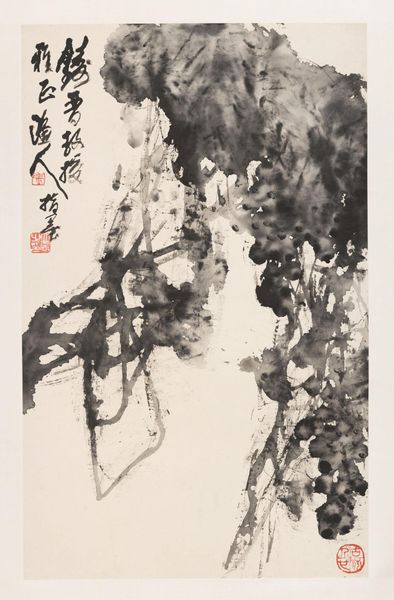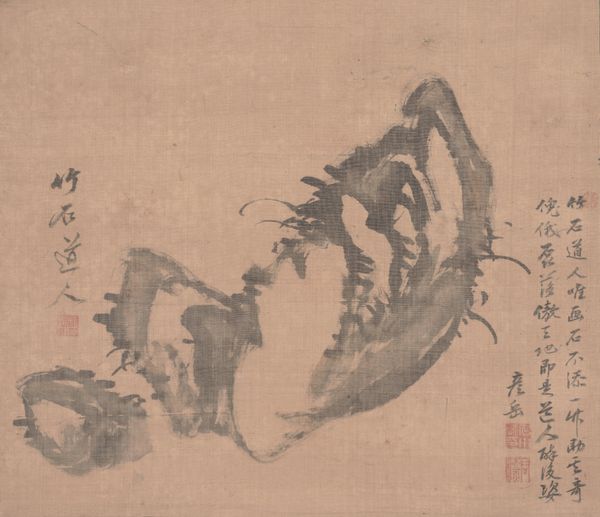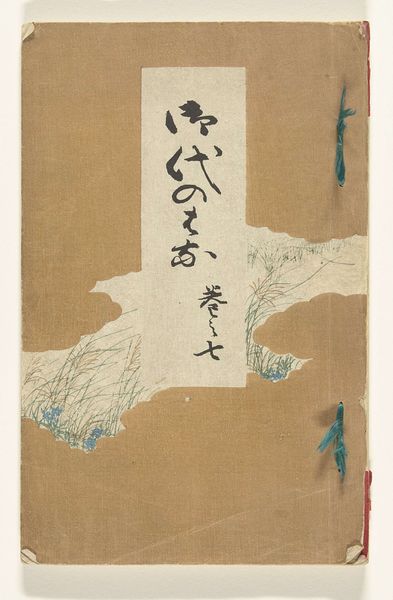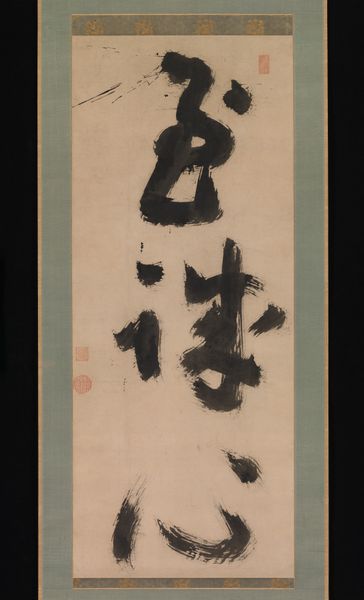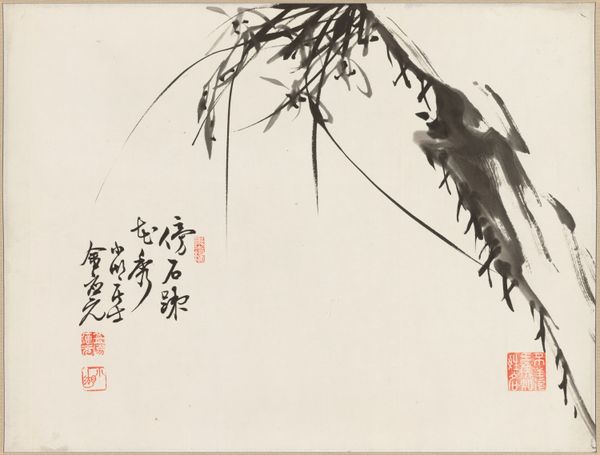
drawing, paper, hanging-scroll, ink
#
pencil drawn
#
drawing
#
asian-art
#
landscape
#
paper
#
form
#
hanging-scroll
#
ink
#
pencil drawing
#
ink drawing experimentation
#
abstraction
#
china
#
line
#
calligraphy
#
monochrome
Dimensions: 46 3/16 x 11 15/16 in. (117.32 x 30.32 cm) (image)
Copyright: Public Domain
Editor: We're looking at "Rocks," a 19th-century ink drawing on paper, likely a hanging scroll, by Zhou Tong. There’s also calligraphy here. The image feels monumental despite, I imagine, its relatively modest size. What are your thoughts about this artwork? Curator: This piece exemplifies the intersection of art and intellectualism within the Chinese literati tradition. These rocks aren't just rocks, they are powerful symbols that embody both resistance and adaptation. Consider the socio-political landscape of 19th-century China – what stories do you think these resilient forms might be whispering about cultural endurance in the face of upheaval? Editor: Resistance and adaptation... I see how the deliberate brushstrokes create both a sense of solid, unyielding form but also this ethereal, almost fluid quality. So, do you mean like it's both about holding firm to cultural identity but also bending and changing as a means of survival? Curator: Precisely! These "scholar's rocks," or "spirit stones," were collected and displayed not just for aesthetic pleasure but for their embodiment of cosmological principles and moral virtues. Zhou Tong uses ink and line to subtly challenge established power structures. What elements in the composition do you think might subtly indicate that? Editor: Perhaps the asymmetry? And how the rocks dominates the space while the inscription, though beautiful, is almost secondary. It's not a passive landscape, is it? It demands attention, even conversation. Curator: Exactly. And, note the use of negative space around the rocks. It signifies the boundless possibilities within limitations, or freedom within constraint – which is key. How do you interpret this "dialogue" between the rock and the empty space surrounding it? Editor: The negative space almost defines the rock, makes it pop out even more, suggesting to me a sort of quiet strength. Like it doesn’t need to shout to be seen. I guess it speaks to finding power within constraints. Curator: Precisely. The art invites us to re-evaluate these binaries and appreciate their interdependence. Thank you for such astute observations! Editor: Thanks! It definitely reframed how I think about art, from being passively observed to actively challenging our understanding of the world.
Comments
No comments
Be the first to comment and join the conversation on the ultimate creative platform.




